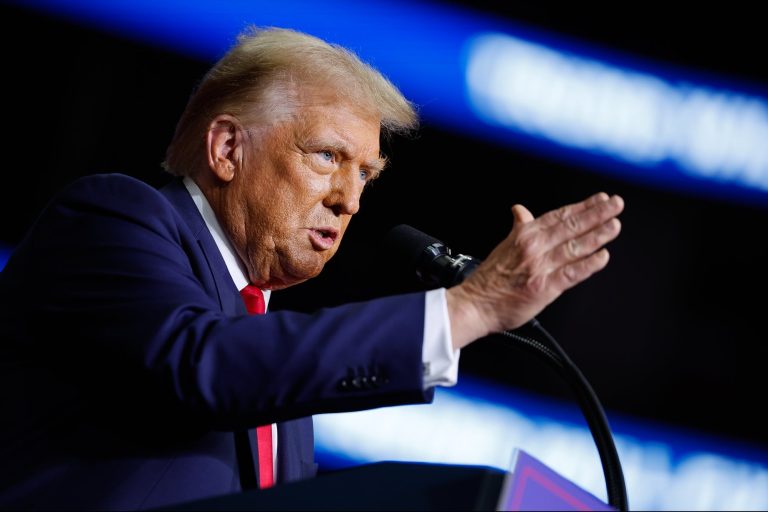Entrepreneur
President Donald Trump’s election to a second term was a win for business and investment — two important drivers of economic growth. His campaign promises largely reflected a pro-business ideology, promising support for entrepreneurship and corporate expansion and starkly contrasting with Vice President Kamala Harris’s consumer-focused approach, which seemed to overlook the crucial balance between investment and consumption.
Donald Trump’s business-driven agenda
A cornerstone of President Trump’s first term was the 2017 Tax Cuts and Jobs Act (TCJA), which placed a clear emphasis on empowering small businesses, entrepreneurs and investors to put more money back into their ventures. The TCJA was packed with pro-growth policies, including the 20% qualified business income (QBI) deduction, the ability to fully expense equipment purchases and cutting the corporate tax rate from 35% to 21%. During the campaign, President Trump suggested taking this even further by reducing the tax rate to 15%, underscoring his commitment to stimulate corporate investment.
These supports for business and investment worked. With a lower tax burden and targeted incentives, entrepreneurs and businesses made significant investments in the U.S. — buying more equipment, adding jobs and creating much-needed goods and services for society. Extending the QBI deduction and enhancing it to 25-30% would further incentivize entrepreneurship, especially if the deduction applied to all business types, including service industries.
President Trump also recognizes that research and development play a critical role in innovation and economic expansion. By advocating for permanent bonus depreciation, Trump aimed to align the U.S. with other nations that offer full deductions for equipment investments. However, this commitment should extend to R&D tax policies. Most other countries have much better R&D tax benefits than the U.S., putting our businesses at a disadvantage.
Related: 3 Major Reasons Why Donald Trump’s Second Term Will Benefit My Business and Increase Profits
The contrast with Kamala Harris’s consumer-centric focus
The Harris-Walz campaign took the opposite approach.
Throughout the campaign, Vice President Kamala Harris strongly emphasized consumer protection. Her proposals included price controls and programs to boost consumer spending, prioritizing immediate consumer benefits over long-term economic growth.
Price controls often sound attractive on the surface but, in reality, distort the market, often discouraging businesses from investing in areas where their returns will be capped. This stifles innovation and, in the long run, reduces competitiveness on a global scale.
Vice President Harris’s focus on a consumption-driven economy would have overly relied on short-term spending. Without investment in infrastructure, technology and R&D, the economy risks stagnating. In addition, she proposed raising corporate taxes to 28% and combined capital gains taxes to 33%. The money that would go toward higher taxes would then not be available as capital for businesses to expand, hire and innovate, ultimately hindering economic growth.
Related: 10 Significant Ways A Second Donald Trump Administration Could Impact Your Taxes
A call for a focus on pro-business policies
Despite a largely pro-business stance, President Trump also floated his share of consumer-focused policies during the campaign. Suggestions to eliminate income taxes on tips and overtime pay were popular among large and important segments of voters but would cause havoc for business owners. The tax change would create massive inequity among workers in the same business, with hosts and chefs paying taxes on their full earnings while servers would not. It also would create unintended incentives for people to shift to nonexempt (and overtime-laden) work schedules.
Based on his campaign rhetoric, President Trump also seems certain to use tariffs as leverage with U.S. trading partners, especially China and Mexico. As all tariffs do, that will surely hit the pocketbooks of consumers and businesses alike.
As President Trump embarks on his second term, both he and Congress must stay focused on policies that bolster business and investment. This is the proven path to sustained economic growth and prosperity.
It’s also not a partisan position. The first time a U.S. president encouraged investment through economic policy was when President John F. Kennedy signed legislation creating the investment tax credit in 1962, encouraging businesses to buy equipment during a time when the economy had slowed. President Ronald Reagan also used economic policy to boost investment, adding significant benefits to real estate investment in 1981.
President Trump and the next Congress have an opportunity to add to this positive legacy. They simply need to stay focused and united on the right policy changes. Reducing business tax rates, encouraging investment and supporting entrepreneurship and innovation would go a long way toward improving U.S. competitiveness with the rest of the world. Entrepreneurs are the lifeblood of the American economy.
Let’s not allow this moment to slip by.
Read the full article here






